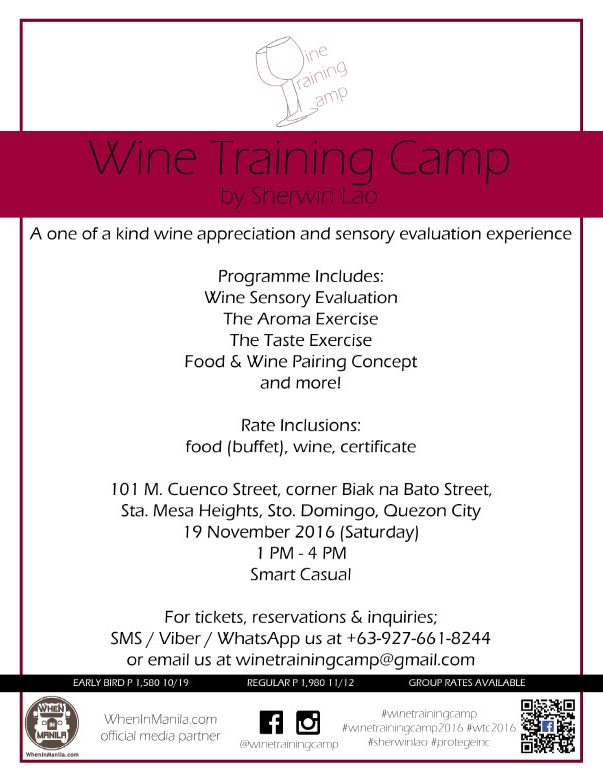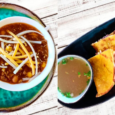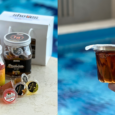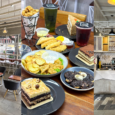Event Title: Wine Training Camp 2016 (WTC 2016)
Who: wine: enthusiasts, greenhorns, neophytes, novice; students: culinary, sommelier, hotel restaurant management (even business takers)
Where: 101 M. Cuenco Street, corner Biak na Bato Street, Sta. Mesa Heights, Sto. Domingo, Quezon City
When: 19 November 2016 (Saturday)
Time: 1 PM – 4 PM
Attire: Smart Casual
What & Why:
`Translucent greenish yellow color, peach nose, biscuity aromas, some white petal, dry with good acid structure, medium bodied, with citrus and mineral aftertaste’ – this was my tasting notes of a recent Chablis I tried from Raoul Gautherin, a boutique winery in Burgundy, France. For most people, this prose-like description sounds a bit too complex. Others may even think the long notes border toward `weirdness’. But to the wine enthusiasts, they appreciate and understand the tasting notes. A lot of people believe it is a talent to describe wine in so much details. To me, it is just a matter of training. Everyone, unless you are impaired in some of your basic senses, like having poor eyesight, being sick etc., can be trained to be wine savvy. This is where the Wine Appreciation Workshop a.k.a. Wine Training Camp comes in.
I conduct the Wine Appreciation Workshop for the Culinary Center for Arts (CCA) Manila a few times a year. I also do this with corporate accounts. It is an extensive course that focuses on the sensory evaluation of wine, rather than on the technical nor the scholastic side. However the seminar does include food and wine pairing concepts, wine-making styles, taste profiles of popular varietal wines and others. The seminar intends to equip participants with the right wine communication skills to be able to express their own tasting notes. We are all entitled to our own wine opinion and cannot be intimidated by other people’s tasting notes even if they are more seasoned than we are. The two unique major features are: 1) The Wine Aroma Exercise, and 2) The Wine Component Tasting Exercise.
Wine Aroma Exercise
The wine aroma exercise allows participants to smell or nose different aromas found in wine. The aromas come from imported concentrated essences that simulate real wine aromas. There will be a minimum of twenty aromas in this exercise. These aroma essences are added to water and placed in individual wine glasses. The aromas can range from positive notes to negative ones. Most aromas are associated with fruit flavors. The popular fruit aromas in wine are apple, lemon, blackberry, strawberry, pineapple, cantaloupe and lychee. This exercise is meant to increase your wine vocabulary. In the absence of definitive wine terms, we use a lot of figures of speech, like similes and metaphors on everyday scents and aromas. Aside from fruit flavors, others detected include flowers, condiments and animal smells. The University of California Davis (UC Davis) created the popular chart called The Aroma Wheel which diagrammed the different aromas that are detected in wine. This Aroma Wheel is a wonderful guide every wine professional should use in teaching wines. The basic UC Davis aroma chart has 18 aromas, while the Aroma Wheel from the American Society of Ecology and Viticulture listed 134 aromas, including some unthinkable, though really wine-detectable ones like cat’s pee and wet dog amongst other weird sounding and unpalatable aromas.
In this part of my seminar, I lined up twenty of the aroma-infused wine glasses, so each participant can nose every one of them, simulating real `nosing’ in wine. The participants are also given the basic UC Davis Aroma Wheel chart to reference the smell and make mental imprints. This exercise is the solution to anyone’s olfactory verbal gap. During the seminar, I also give a wine varietal guide to the different aromas. For example, Cabernet Sauvignon normally has black currant and blackberry aromas, Chardonnay has peach and lemon flavors, while Riesling has the lychee and longan notes.
Wine Component Tasting Exercise
While the wine aroma exercise focuses on the wine nose, the wine component tasting exercise is zoned in on the taste and the `touch’ portion of the wine. In the wine component exercise, I play a winemaker in a more New World setup. I get to tinker with the wine components. Wine components are both natural and created. Natural components are grape sugar, grape tannins and grape acid. The created components are the oak-influence and the malolactic process (semi-created actually). In this exercise, the participants get to taste one wine in five styles. The same wine will be doctored to exaggerate the components, without making the wine bad. This is to reflect a style of winemaking that may appeal to different people – some prefer sweeter wines, others the drier style, others more on oakiness, and so on. I have imported winemaking components that I add to the wine to manifest these styles. In the New World, terms like `Chaptalization’ and `Acidification’ are done regularly on the wine. Chaptalization is the process of increasing grape sugar to add more body and ripeness to the resultant wine. Acidification on the other hand is to add tartaric acid to augment freshness and acid structure on the wine. Adding tannins is being done too to improve the tannin backbone of a flimsy wine. In this exercise, the participants get to try the same wine five times: 1st wine – As Is, 2nd wine – with added grape sugar, 3rd wine – with added tartaric acid, 4th wine – with added tannins, and 5th wine – with oak chip extract. These five ways allow participants to isolate the specific wine component and decide on which component he or she is partial or impartial to. In my seminar, I normally do a White wine and Red wine versions of the component tasting. The component tasting exercise give participants the sensory experience to call a wine sweet, dry, acidic, tannic and oaky. Even the finish of the wine (under the `touch’ portion of wine) is affected by the components, so description like long lingering ripeness can be derived from the higher residual grape sugar added in the exercise.
At the end of the seminar, participants get to experience a workshop that hone their wine communication skills. Eventually, each person’s sensitivity and palate will differ, but the common language can be upheld. The Wine Appreciation Workshop lasts from two and a half to four hours depending on the extend of the wine selection, the food and pairing portion if requested and other customized topics. I highly recommend this one of a kind Wine Appreciation Workshop to those who are interested in wine, whether it be as a profession (in F&B), or purely for personal wine development. Whatever the reason, I guarantee you that this is one seminar that will increase your budget for wine purchases.
Rates: Early Bird – P 1,580 (until October 19) & Regular – P 1,980 (until November 12)
Group Rates:
Early Bird: 10 people – P 1,550 / head, 15 people – P 1,500 / head, 20 people – P 1,480 / head, 25 people – P 1,450 / head, 30 people – P 1,400 / head
Regular: 10 people – P 1,950 / head, 15 people – P 1,900 / head, 20 people – P 1,880 / head, 25 people – P 1,850 / head, 30 people – P 1,800 / head
Rate Inclusions: food (buffet), wine, certificate
For comments, inquiries, wine event coverage, wine seminar interests, and other wine questions; contact us via SMS / Viber / WhatsApp at +63-927-661-8244 or via email at winetrainingcamp@gmail.com
Written by: Sherwin A. Lao





